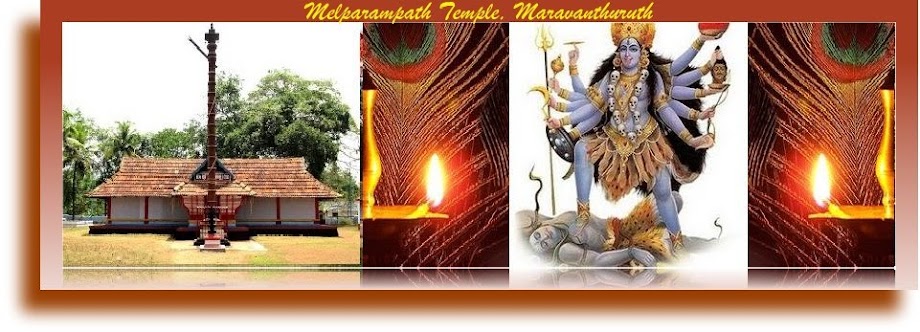1. Bhadrakali Kalam
2. Artist drawing Kalam
3. Bhadrakali Kalam with 32 hands
4. Bhadrakali Kalam with 16 hands
5. Bhadrakali Kalam with 8 hands
Bhadrakali of 64 hands with Vethalam
Completed Bhadrakali of 64 hands with Vethalam
Kalamezhuthu
Kalamezhuthu is a ritual connected with drawing on the floor for seasonal festivals in shrines. Kalam falls under the category of Dhooli chitram (drawings, with coloured powders). Men from certain communities draw Kalam, an elaborate picturesque design. Drawing telltale, stylised figures of gods and demons for temple festivals, is part of the mystical rhythm of our folk traditions. The carpet-like designs are made of herbal powders. The colours used are white, black, yellow, green and ochre that give a rare vitality with shades of old world magic associated with primitive religions. In Kerala, ritualistic festivals begin from the Malayalam month of Vrihchikam continue through the harvest seasons until the pre- monsoon showers.
The art of creating very large pictures on floor, with coloured powders have been in vogue for ages as a ritual art form. It is typically Indian as it is a harmonic blend of Arian, Dravidian and Tribal traditions. As an art form it has found a significant place among our rich spectrum of fine arts. In most other parts of India this art exists as a domestic routine of Hindus, who consider it auspicious to draw certain patterns at the door step and courtyard to welcome a deity into the house. It is called by names like Rangoli, Kolam etc.




